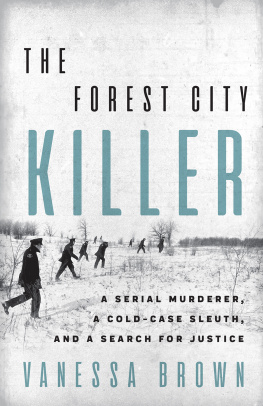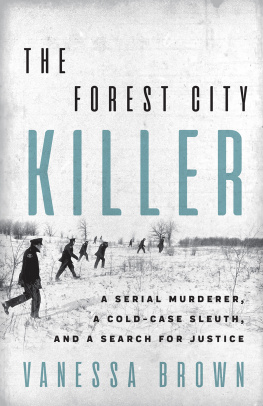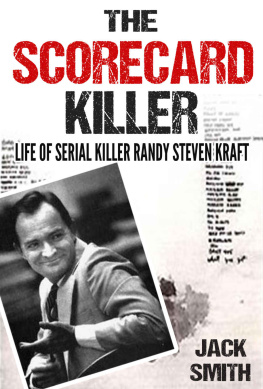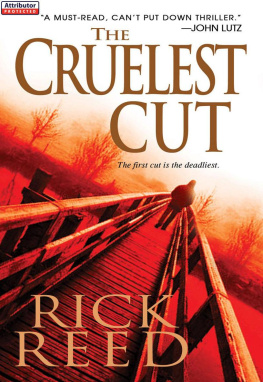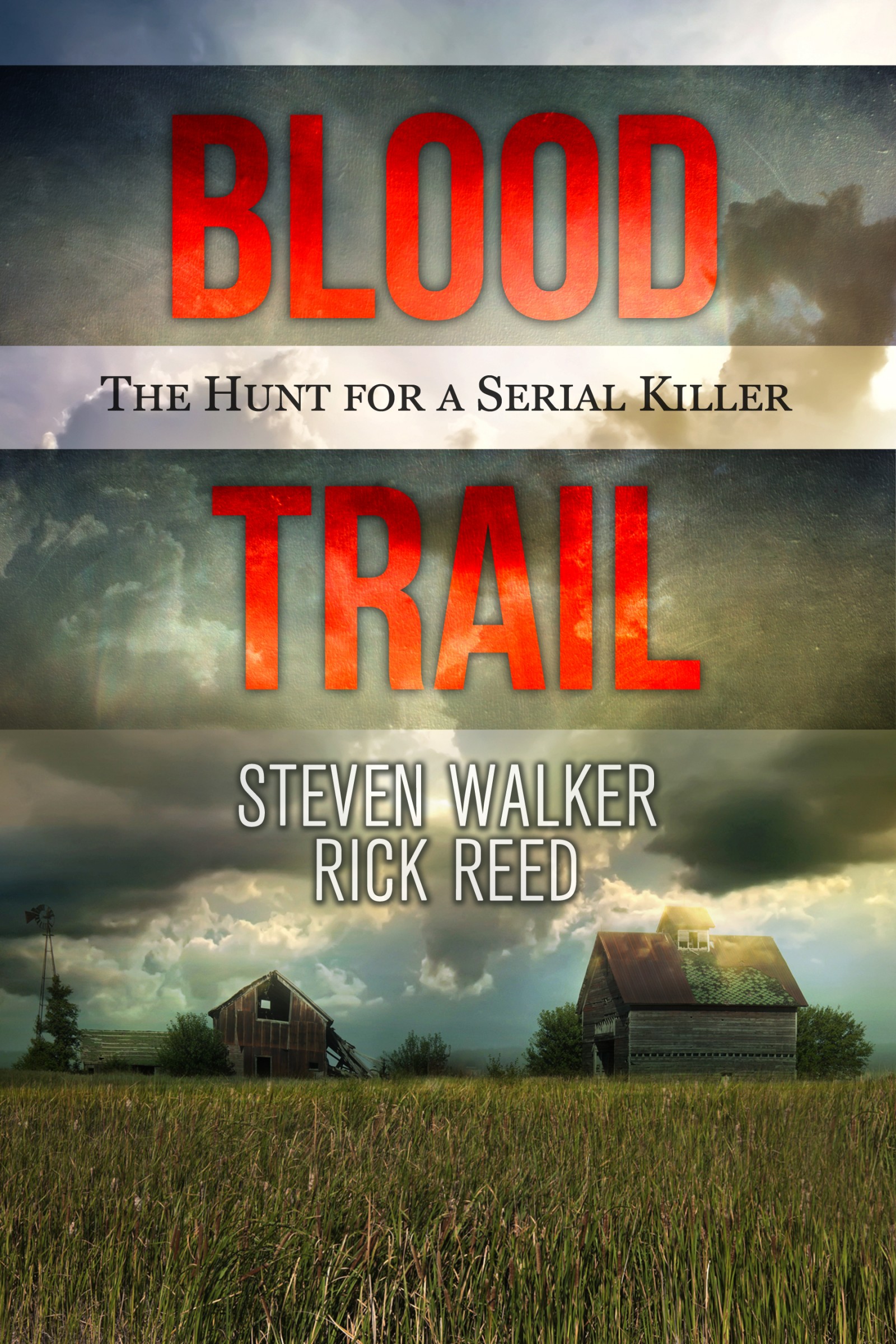P ROLOGUE
As a newly appointed sergeant on the Evansville Police Department (EPD), Rick Reed had spent most of his working years dealing with violent people. As he worked his way through a bankers box, filled with bits and pieces of the lives of two families, he had to mark the stark differences in the pile of love letters in front of him, and the reality those letters had brought. If you believed the letters, Joseph Weldon Brown and Ginger Rose Gasaway were a couple in love.
They enjoyed simple things, and they fought, like most couples. They even had cute nicknames for each other. He was Smokey and she was Casper, the nicknamesreferred to their shared cigarette smoking habit. But that was where the cuteness ended.
Literally hundreds of letters, all written to Casper, all ending Love, Smokey, shared the same theme: one of reconciliation that stopped just short of threats of violence if these overtures were denied. Reed thought perhaps the nickname Casper was a prediction that Ginger would soon become no more than a ghost.
It would become the job of the Evansville Police Department to find out who was responsible for one of the most vicious crimes to take place in the state of Indiana. Who was responsible? Was it Gingers lover, Joe Brown? Could it have been her estranged husband,Hobert Gasaway, who also was attempting to reconcile their relationship? Was it someone else that may have been less suspected?
This is a story of abuse, depravity, a love triangle, addiction,murder, mutilation, confession, politics, and a need for notoriety and acceptance. In addition to Gingers murder, the killer confessed to murdering thirteen other women over a period of five years, resultingin a nationwide search for evidence to prove his statements.
One of those murders remains an open case, and in one statement, a police officer was accused of having been involved with the victim. One of the investigatingdetectives was also charged with the duty of investigatinganother murder that involved a former Evansville police chief. Blood Trail is a story that unfolds over decades, and although it comes to a conclusion, it also hints at stories that are yet to be unraveled.
O NE
It is the heartland of America. In the third week of June, tassels already sway at the top of an ocean of cornstalks,giving seed to feed the population of the greatestcountry in the world.
In a dozen lifetimes, an army of Rumpelstiltskins could not spin the fields of golden thread to equal the amount of shimmering wheat that fills the horizon of southern Indiana.
In some places, the road is walled for miles with towering stalks of corn. At other areas, the horizon seems a million miles away across an endless field of soybean or watermelons. Regardless of what view the southern Indiana roads provide, there is always one thing that stays the same: it is always dark at night.
Except for in the city of Evansville, there are no streetlamps to guide you on your way. The path is not dotted with front-porch lights of nearby houses, and the headlights of passing cars are few and far between. Night falls early in this part of the country, and when it does, it spreads itself as thick as a murky black oil spill across the sky.
One thing that continues to stay light is the skin color of the inhabitants in this heartland. According to the 2002 population statistics printed in Evansville Visitor magazine, published by the Evansville Courier & Press, an average of 95.2 percent of the homes in Gibson, Posey, Vanderburgh, and Warrick Counties are owner-occupiedby Caucasians.
The city of Evansville, with a population of just over 121,000, contains 85 percent of the population of all four counties put together.
You may think were a bit like country folk, but thats only because we are, said Dave York, a resident of the tiny town of Haubstadt.
Duane Brown, Joe Browns second cousin, and a professor at the University of North Carolina at Chapel Hill, grew up in this southern Indiana farming community.He described the people who live there like this:
Theyre just plain folk who like to gossip. Talk about the person down the street whos having an affair is what makes life worth living.
For the most part, the population is made up of conservativeBaptists. There are also a few Methodists and Presbyterians, and not quite enough Catholics to get a bridge party together.
When people talk, they dont have to conjugate verbs because aint is the only one used, and the famous Indiana Hoosiers nickname came from everyoneasking, Whos your mother and whos your father?
Duane Brown also said that parents dont worry much about keeping their children in school and providingthem with a good education.
What they worry most about is whether or not they make the basketball team. The most important thing to teach them is how to scratch and spit.
Of course, Duane Browns description was given in jest. He still held a soft spot in his heart for Indiana and was himself a testament to higher education and what could be achieved from a good ol Indiana boy.
Today, many Indiana parents are intensely proud of the education of their children. It is also true that Indiana has produced some of the greatest sports legends of our time, including Bob Griese, of the Miami Dolphins, Don Mattingly, of the New York Yankees, and Andy Benes, of the St. Louis Cardinals.
And, of course, Indiana is the home of the countrys most famous auto race, the Indianapolis 500.
Indiana know-how also created one of the primary steel-producing industries in the country. In addition to producing agriculture, fishing, forestry, mining, and the production of electrical and electronic equipmentmade Indiana the eighth highest manufacturing-producingstate in the country by the end of the 1970s.
Indiana also produced Joseph Weldon Brown. BecauseJoe Brown was often described as the apple that didnt fall far from the tree, its important to describe his father. Gerald Jerry Brown was an angry man.
Jerry was a carpenter, and if hed hit his thumb with a hammer, hed tell that thumb that if it was going to hurt him, hed show it what pain really felt like. Then hed smash the hell out of it again. Damn you thumb for hurtin me! hed say, said local resident James Kincheloe, who knew the Brown family.




